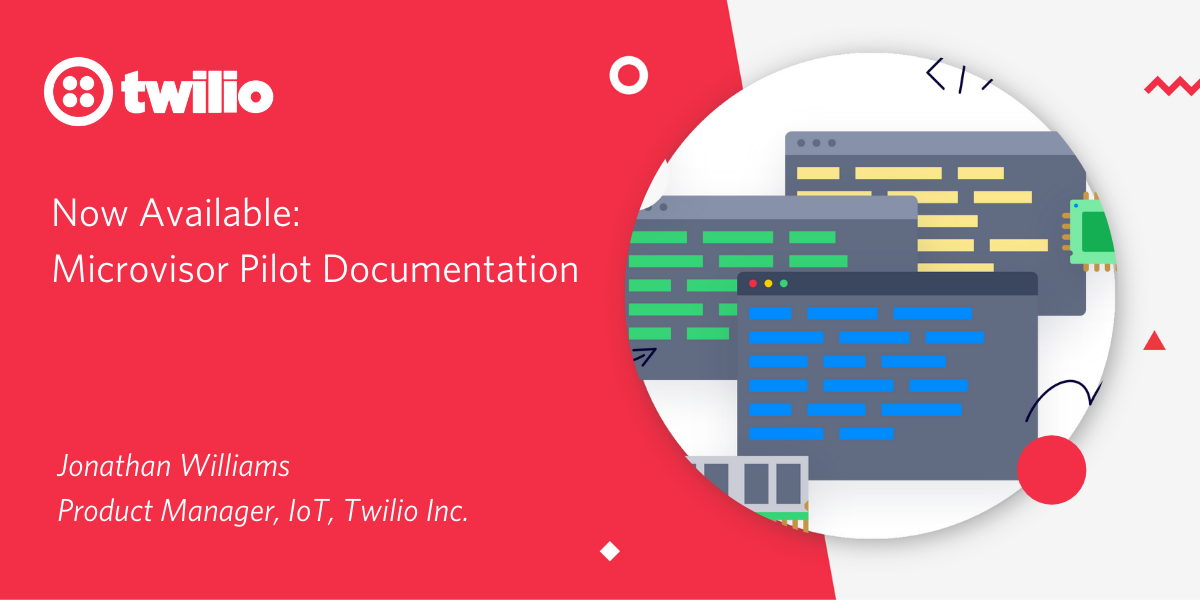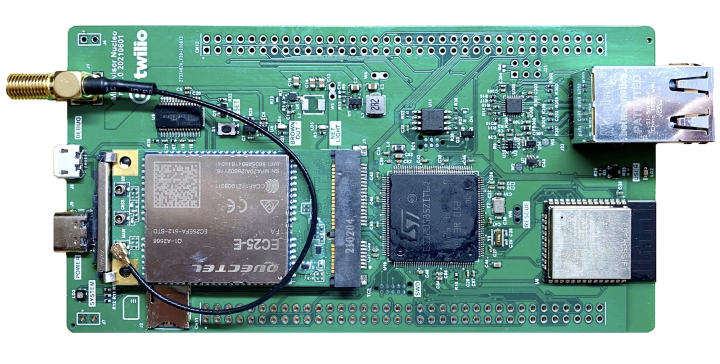Now Available: Microvisor Pilot Documentation
Time to read: 3 minutes

It is rare that one launches entirely new platforms to the market. At SIGNAL 2020, we announced Twilio Microvisor, a new IoT platform for builders of connected devices, and I can now provide an update on reaching a major first milestone with the Pilot documentation going live today. This will enable any embedded engineer to build their products with Microvisor in mind.
For those of you new to Microvisor, here is a video introducing its capabilities:
The Microvisor development has been progressing at pace and we are well on the way to deliver the first code in a few months’ time. Internally, we have the Microvisor cloud implementation up and running, as well as the OTA upgrade of real devices taking place. The secure device firmware is also racing along, with connectivity, upgrades, and cloud communications all functional.
Hardware wise, the Nucleo form factor development boards have returned from manufacture and are up and running with the latest STM32U5 devices on them.

Embedded engineers can start designing on Microvisor now
The initial hardware and software documentation is now available to Beta Program applicants, which will enable you to start designing with Microvisor in mind. Sign up for the Microvisor Beta Program here.
The hardware documentation describes the details of the pins and interfaces reserved for Microvisor use on the STM32U585. It explains the clocks, power states, and additional circuits needed to design and build a Microvisor based device.
We have also provided the schematics for a Twilio ‘Nucleo’ form factor development board enabling you to start designing hardware of your own based on the STM32U585.
The software documentation covers the secure boot and startup logic, the OTA upgrade process, the memory partitioning, and interrupt usage; It also provides an overview of the API which we will shortly be adding.
Integrating your code into a Microvisor enabled world
The unique thing about the Microvisor approach is that you don’t need to change your way of working to add the Microvisor features into your device.
You develop your embedded application targeting the STM32U5 your way, be that a bare metal application, or built on top of a real time operating system (e.g Free RTOS), or any way you see fit. Whether it uses Cellular, Wi-Fi, or Ethernet connectivity, the communications hardware components (i.e. the modem or the communications co-processor), their firmware, drivers and stacks are all Twilio’s responsibility to manage and maintain.
Simply add Microvisor via API calls into your application and benefit from a lifetime of security updates, the ability to push your own OTA code updates, secure boot, managed connectivity, and the ability to remotely debug your application anywhere in the world.
This means that it has never been easier to:
- Migrate an application to a secure managed approach,
- Enabling faster secure device development, and
- Access to the scale you need for reliable, trusted IoT deployments.
And with support for cellular connectivity powered by Twilio Super SIM supported from the start, Microvisor and Super SIM combined provide fully managed device-to-cloud connectivity and bring the power of simple APIs all the way to the edge. As a developer, you’re empowered to develop your product your way, but now with a new agility, speed, reliability, and operational efficiency previously reserved for pure cloud, i.e. pure-software deployments, never for IoT hardware.
The Microvisor timescale from here
As we move through the summer, we will continue to add to and improve the documentation as the development progresses. Expect to see:
- More hardware design files for the Nucleo form factor development board
- The initial version of the on-chip device side API
- The cloud API (e.g. for the OTA updates)
Following these, we are looking to provide the Private Beta SDK release (the first code) as soon as we can. Expect late 2021.
How to sign up to the pilot, and how to gain access to the docs?
First, if you have not yet signed up for the Microvisor Beta Program, you can do that here. This will get you access to the regular updates and make sure that you are first to hear when we reach the next milestones and announce the new releases.
To gain access to the pilot documentation itself, there are a few additional steps needed:
- First, you will need to create a Twilio account if you do not already have one
- Find your Twilio account SID on your Account Dashboard in the Twilio Console
- Email microvisor@twilio.com and provide your account SID; We will enable the documentation at our end.
Welcome aboard.
Related Posts
Related Resources
Twilio Docs
From APIs to SDKs to sample apps
API reference documentation, SDKs, helper libraries, quickstarts, and tutorials for your language and platform.
Resource Center
The latest ebooks, industry reports, and webinars
Learn from customer engagement experts to improve your own communication.
Ahoy
Twilio's developer community hub
Best practices, code samples, and inspiration to build communications and digital engagement experiences.